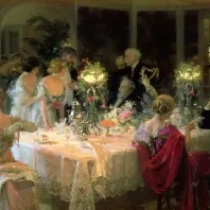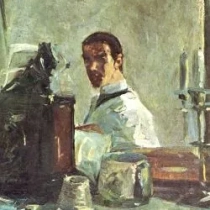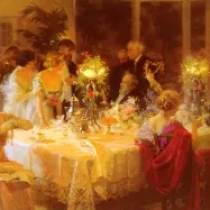 1868 - 1934
post-impressionism
1868 - 1934
post-impressionism
Description Jules Alexandre Grun
Jules Alexandre Grün, born on May 25, 1868, in Paris, emerged as a vibrant force in the Belle Époque art scene, navigating the currents of Parisian society with his distinctive style and keen observations. His life unfolded against the backdrop of the effervescent cultural milieu of late 19th and early 20th-century France.
Grun's artistic journey commenced with formal training at the École des Beaux-Arts, where he honed his skills and absorbed the influences of the era's artistic ferment. However, it was his immersion in the Montmartre bohemian circles that would shape his unique artistic identity. Grün, known for his wit and social acumen, became a fixture of the Parisian café culture.
The artist's illustrations and posters captured the spirit of Belle Époque Paris, epitomizing the joie de vivre of the era. His depictions of fashionable women, theatrical scenes, and advertising posters reflected a mastery of color and form, embodying the vibrant energy of the city.
Grun's collaboration with the renowned cabaret Le Chat Noir further solidified his status. His iconic posters for the establishment, featuring bold designs and vivid hues, contributed to the visual language of the burgeoning Art Nouveau movement. Grün's ability to seamlessly blend commercial art with a distinctive aesthetic vision set him apart.
While celebrated for his commercial work, Grün's talent extended to more introspective and symbolic creations. His exploration of allegorical themes, such as "The Green Muse," revealed a deeper layer to his artistic persona, delving into the complexities of inspiration and the human psyche.
Grun's social circles included luminaries like Toulouse-Lautrec, Steinlen, and other figures central to the avant-garde. His involvement in artistic and literary salons underscored his multidimensional engagement with the cultural currents of the time.
As the Belle Époque yielded to the seismic shifts of the 20th century, Grün's art faced challenges from emerging movements. Despite this, he continued to adapt, embracing new subjects and styles. Grün's later years saw a return to more classical themes, revealing his versatility as an artist.
Jules Alexandre Grün passed away on February 15, 1938, leaving behind a legacy that captured the effervescence and dynamism of a bygone era. His ability to straddle the worlds of commercial and fine art, coupled with his keen insights into the zeitgeist of Paris, ensures his place as a distinctive figure in the tapestry of Belle Époque art.







No Comments Yet...